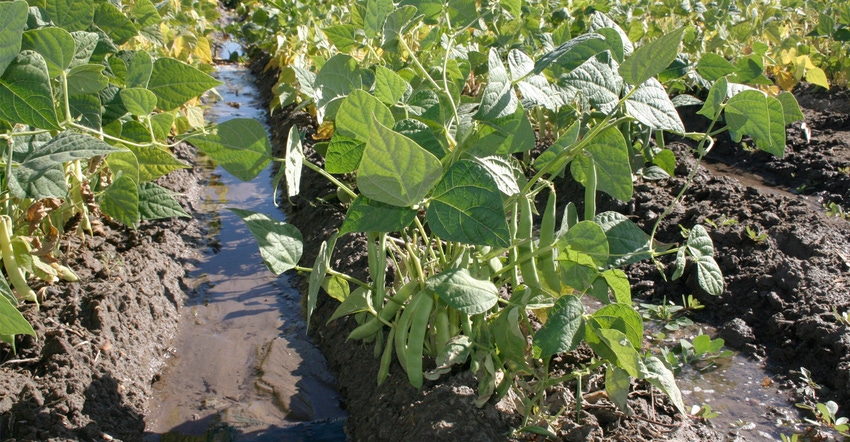
Using soil moisture probes is a common practice for growers scheduling irrigation throughout Nebraska. But are there other methods that might work just as well?
A group of researchers at the University of Nebraska-Lincoln Panhandle Research and Extension Center is testing a different method of scheduling irrigation for dry edible beans.
This method, infrared radiometry thermometer, uses a sensor to remotely measure crop canopy temperature to determine when the crop needs water.
"This method is not entirely new,” says Xin Qiao, irrigation and water management specialist at the Panhandle center. “It's a method that was developed early in the 1980s, but it's mostly been used on taller crops like corn, cotton and sorghum. Researchers using IRT sensors on corn or other tall crops use the sensor when the crop reaches full canopy, because you want to make sure the sensor doesn't pick up any soil background as noise. For dry beans, we're trying to use the sensor for the entire growing season."
While this means there's some noise to filter out, Qiao notes IRT could potentially be less expensive and easier to install than soil moisture sensors and may be an alternative way to schedule irrigation for dry edible beans.
"Soil moisture probes are underground, so you have to dig a hole to install them,” he explains. “You always want to know the root zone soil moisture of the crop, and you want to install the soil moisture sensor to that depth. That makes installation more challenging for deep-rooted crops."
"The IRT sensor is a remote sensing method,” Qiao adds. “The sensor is mounted on a pole in the field, is pointed downward and measures thermal radiation from the crop canopy. So, radiation from the soil around the plants and the crop canopy itself is picked up by the sensor. Noise from the soil does have to be filtered before readings can be used."
Qiao is working with Weizhen Liang, a postdoctoral research associate at the Panhandle center, and Kelly McCoy, an intern who is a senior at Scottsbluff High School, to develop software and algorithms to analyze images from the field for red, green and blue values to estimate the percentage of canopy cover compared with soil — which not only helps differentiate between foliage and soil but is a key parameter for estimating canopy temperature, plant stress and water requirements.
"Using one method, we calculate a crop water stress index using canopy temperature,” Qiao says. “It's an index ranging from 0 to 1, and that index is determined by a threshold for that particular crop. If it's at that threshold, I start irrigating. If it isn't, I don't. In that way, IRT is almost like a soil moisture sensor.”
"Using the other method, we can directly calculate evapotranspiration — you create an ET value directly from a temperature value using the two-source energy balance model," he adds. "That gives you the actual quantity of water needed. We are working on both methods."
The project is funded by the Nebraska Dry Bean Commission and will last until this summer.
Qiao says the long-term goal is to create a website to use with the IRT sensor system. If a farmer takes a photo of a bean field, the website will use data from the nearest weather station with a crop water model to provide crop water use calculations.
"Last year, it was relatively wet in Scottsbluff,” Qiao says. “With just one year of data, there are no big takeaways yet. So far, the model we have is working. We're fine-tuning those parameters and will continue to work on it this year."
About the Author(s)
You May Also Like






